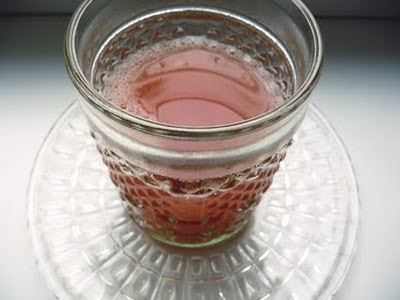Home-made Quince Jelly Recipe
The aromatic quince fruits turn into a beautiful rosé-coloured jelly that we enjoy with our favourite vegan pancakes, or give friends as gifts.
The first time I tried or even heard of quince was when we lived in Ireland and a cheese monger recommended we try quince jelly with some Spanish cheeses. After that many years passed without any quince, but as we moved to Germany we noticed it's a regional fruit here. It's in season mid-autumn (October-ish) and we find it at markets or order it in our regional veggie delivery box.
Last year our dog sitter gifted us with a bagful of quinces. The fruit is very aromatic and it's a pleasure to have it just sit in the kitchen, but it was clear we were going to make jelly. It didn't even cross my mind to make anything else (can you, even?). I later learned that quince has a high level of pectin which helps the jelly to set, so it's perfect.
Many of the recipes I found called for the use of a thermometer – way too professional for my kitchen skills and patience! – or instructed me to remove the seeds, which takes forever with such a hard fruit, or were just too difficult for me to understand.
Therefore I'm re-testing and documenting this very simple (German) recipe I decided to follow and translate. I'm adding some more detail and have divided it into steps for clarity.
Good to know before you start making your quince jelly
The recipe has three steps:
1. Boiling the quince and letting it cool off.
2. Sieving.
3. Boiling the juice to a jelly and sterilising and filling the jam jars.
Plan your time accordingly – you can boil the fruit in the evening, then sieve and make the jelly the next day.
You will need a clean muslin cloth or similar to help sieve the quince jelly. Make sure you have enough sterilised jars at hand once you start boiling the jelly!
Simple quince jelly – a step-by-step recipe
2 kg raw quince fruit1 kg gelling sugar
(Gelling sugar contains pectin which helps turns the concoction into a marmalade. The packaging on German varieties expresses the proportion of fruit to sugar required – I used 2:1)
3-4 tbsp lemon juice
Optional spices: 1 vanilla pod, 1 cinnamon pod, 3 cloves
1. Wash the quinces and wipe off the lint from the surface with a tea towel. Halve the fruits, then cut each half into 4-8 smaller pieces – leave the peel and pips – and place the pieces in a large saucepan. Cover the quinces with water, just barely. Let them simmer for about one hour, until the fruit is very soft but not mushy. Let the whole concoction steep for about 4-8 hours, or until the fruit has cooled.
Measure the sieved quince juice (roughly, at least) so you know to add the needed amount of sugar with the quince juice (500g per 750 ml of liquid, according to my sugar packet). This time I had 2 litres of liquid.
Do the "gel test" to check the consistency: Pour a teaspoonful of jelly on a cold plate, let it cool for a few seconds and check the consistency by tilting the plate – it should be thick and barely move. If the consistency is very runny, let the jelly boil for another 1-2 minutes.
Pour the finished quince jelly into warm glass jars (that you have sterilised in boiling water and set to dry on a tea towel). Tighten the lids immediately and turn the jars upside down for a few minutes before setting them aside to cool.
Stored in a cool place the home-made quince jelly will keep for around 6-12 months.









Comments
Post a Comment